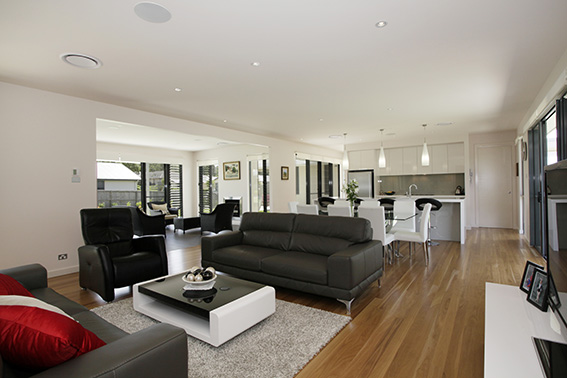THE ENERGY EFFICIENT HOME
Energy efficient homes are designed to reduce energy consumption for heating, cooling and lighting purposes. The following ways can help you to improve energy efficiency.
1. Bioclimatic design:
This type of construction considers the local micro climate and site features to help achieve indoor comfort. By considering the local environment the design uses low or ‘no’ energy solutions for a comfortable home environment.
Bioclimatic design includes the following principles:
- Compact building footprint to minimise surface area in direct contact with the environment .
- Orientation combined with well positioned windows & doors to provide cross ventilation and to control solar access. Interior spaces positioned depending on their heating/cooling/lighting requirements for time of day and season.
- Treatment of the external building envelope and openings to protect the structure from extreme solar heat. Solar radiation is collected by passive solar systems that act as “free” lighting and heating systems.
2. Thermal insulation:
Effectively installed insulation works to ensure energy efficiency in all elements of the home including walls, roofs, lofts, ground decks and facades.
Insulation is just as important in hot regions as it is in colder climates. In warmer areas the system keeps the heat out, minimising the use of air conditioning whereas in cold areas it keeps the heat in, limiting the use of energy for heating.
3, Air tightness:
To create comfortable, controllable energy efficient homes, air leakages should be reduced as much as possible. Air tightness has become a widely discussed and an increasingly important issue, with stricter building regulations coming into effect that require greater energy efficiency.
4. Ventilation:
Defined as controlled or intended ingress and egress of air through homes. Ventilators and well positioned door and window openings not only provide fresh air but also exhaust stale air from the home. Neglecting insulation or ventilation can result in warm, humid air condensing on poorly insulated or cold surfaces causing mould growth. Allowing air flow through the building also in itself provides a cooling effect on a warm day.




